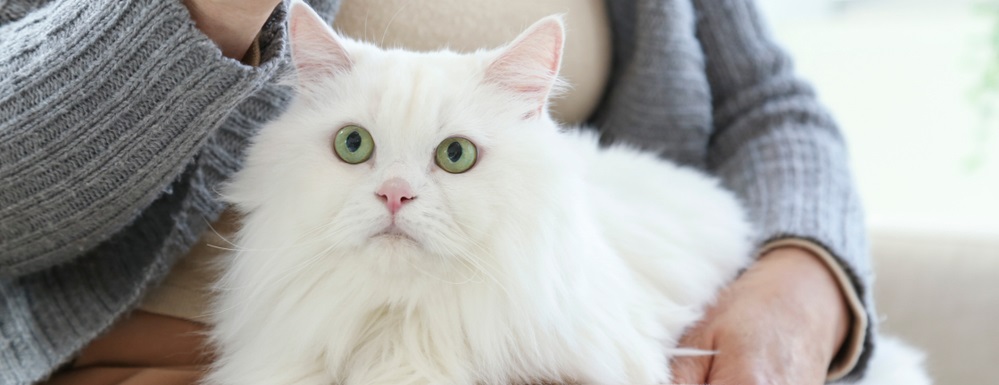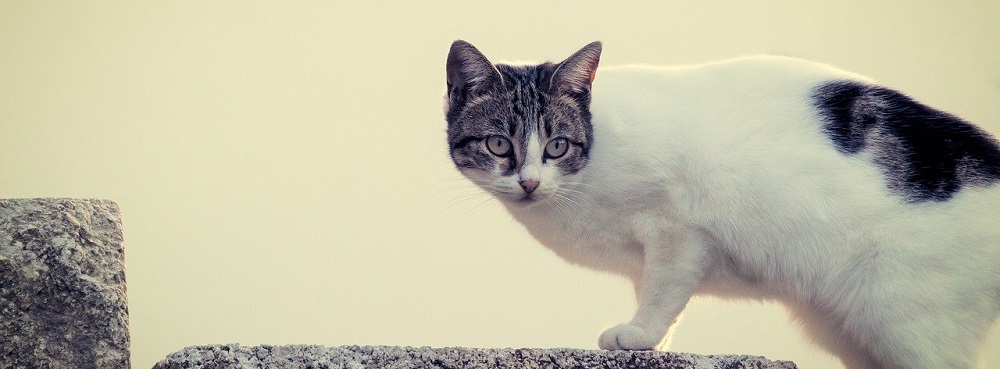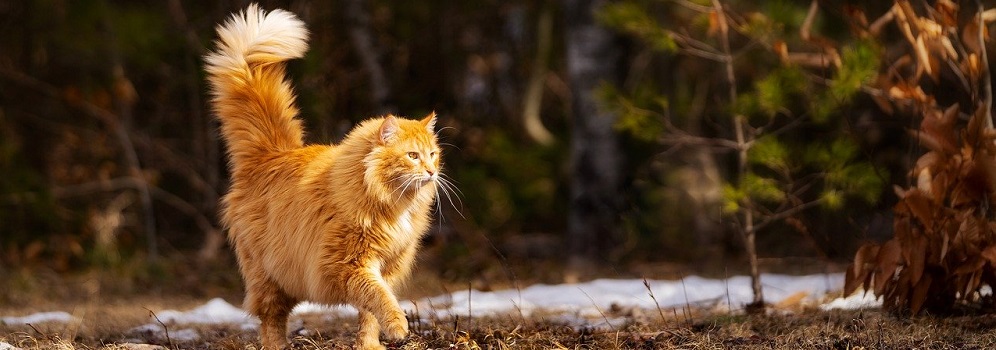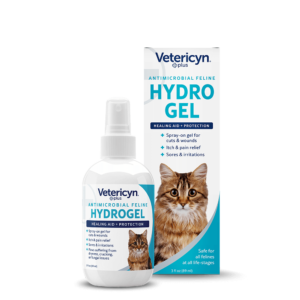Updated March 19, 2025
Your kitty loves chin rubs. But one day, you notice small black spots on his face that won’t come off.
You start to wonder…Does your cat have acne?
It’s not just teenagers who struggle with bad skin: cats of any age can get acne, too.1 But how can you know if it’s cat acne or flea dirt?
Both feline acne and flea dirt can be treated, but knowing the difference determines which treatment your cat will need. This guide explains how you can tell if the black spots you see on your cat are flea dirt or feline acne and what you can do about it.
Feline Acne vs Flea Dirt
Feline acne and flea dirt both look like tiny, black specks. However, they are symptoms of different conditions.
Feline Acne
Although the reasons for feline acne can vary, it’s a skin condition that affects many cats, often in response to environmental allergens, irritants, stress, and bacteria.
Cat acne usually isn’t painful or itchy in the early stages, and it appears around the lips and chin as:1
- Small black dots between the hair follicles
- Large, white, or red pustules that look like pimples
- Areas of hair loss
But feline acne can progress to large, painful, itchy abscesses if left untreated.1

Flea Dirt
Flea dirt is small bits of digested blood that the flea deposits on your cat. 2 3Basically, flea dirt is flea feces, and it means one thing: your cat has fleas.
Flea dirt:
- Appears as small, black specks in the fur
- Is visible when you comb or pet against the grain of your cat’s hair
- Is often closer to the tail or hips than to the neck and head
If your cat is allergic to flea saliva, which is common, they may also have small red, itchy bumps on their skin. That is called flea allergy dermatitis; you can learn more about it.
How to Tell the Difference
The first step in identifying if it’s flea dirt or feline acne involves knowing where to look.
Give your cat a good once-over with a flea comb (you can get one from your veterinarian).
Cat acne is on the face, around the lips, and chin; flea, dirt can be anywhere on the fur.
As you brush your cat, where does the comb pick up the most black specks? Are they like flea dirt, fine, black, and easy to remove with the comb? Or are they fixed on your kitty’s face, just like acne? These differences help you determine which one your cat has.

Treatment: Cat Acne vs. Fleas
Treating cat acne can be done, but you should find out why your cat has this issue. There are many possible causes. The reasons cat acne develops aren’t entirely known, but they are often tied to environmental allergens or bacteria.1 Eliminate those to help prevent recurrences.
Mild cases may respond to topical care but severe cases may need systemic therapy.1
There are some basic steps you can take to avoid irritants at home:
- Clean up. Vacuum the floors and upholstered furniture, wash your bedding (and your cat’s). This also helps if your cat has seasonal skin issues related to allergens like pollen, dust, or mold.
- Change your cat’s food bowl. Plastic bowls, or the bacteria building up in the bowl, may contribute to chin acne. Use ceramic or steel bowls instead.
- Avoid aerosols. Avoid spraying hairspray and perfumes around your cat. Use gentle, animal-safe cleaning products for your home. Home cleaning products may contain harsh chemicals that your cat is allergic to and can harm your cat’s health overall.
Vetericyn’s Feline Antimicrobial Facial Therapy spray is a soothing solution for cat acne. It’s irritant-free and is safe if accidentally ingested. You can use it multiple times a day until the symptoms are gone.
See your veterinarian if you notice large, painful, and itchy pimples on your cat’s face. Additional treatment may be needed. The prognosis for feline acne is good, but it can recur.
Treating fleas is more involved than treating feline acne.
Where there is flea dust, there are fleas. Even if you don’t see any on your kitty’s coat, they’re close: fleas spend only a small portion of their life on their animal hosts.
If your cat has fleas, try all the following to combat the issue:
- Thoroughly clean your home, including vacuuming, steam cleaning, and washing all bedding
- Wash your cat using pet shampoo, and thoroughly flea-comb her coat
- Use a monthly topical medication on all cats and dogs in the house to stop the flea life cycle and prevent more fleas from getting on your pet and into your home. The best products are available through your veterinarian.3
These products can take 6 to 24 hours to work so don’t worry if you still see fleas within 24 hours of the treatment.3
Fleas can cause problems for people, too, so really want to rid your pet and home of fleas if you notice flea dirt. 2

The Final Comb Through
No need to worry if you see black specks on your kitty. You’re armed with knowledge. You know how to determine if it’s fleas or feline acne and you have a plan of action for both.
Visit our blog to learn more about Vetericyn’s animal wellness products and other animal health topics.
 Reviewed by Dr. Kathy Adamson
Reviewed by Dr. Kathy Adamson
Dr. Kathy Adamson earned her bachelor’s degree from the University of Notre Dame and her Doctor of Veterinary Medicine degree from the University of Wisconsin-Madison School of Veterinary Medicine.
She completed a one-year small animal medicine and surgery internship at the North Carolina State College of Veterinary Medicine. Alongside her studies, Kathy worked in a research lab, contributing as an author and co-author to various journal articles.
She has also pursued medical writing and editing certification through the University of Chicago Graham School. Currently, she runs KMA Veterinary & Medical Writing, a freelance medical writing company, serves as the Digital Content Manager for the Greater Chicago Area Chapter of the American Medical Writers Association, is a member of the AMWA Communications Committee, and enjoys writing about healthcare topics for people and their cherished pets.
![]() https://www.linkedin.com/in/kathyadamsondvm/
https://www.linkedin.com/in/kathyadamsondvm/
Sources:
- What is flea dirt. https://www.petmd.com/dog/parasites/what-flea-dirt
- The Spruce Pets. Chin acne in cats. https://www.thesprucepets.com/feline-chin-acne-possible-causes-signs-treatment-3384889
- How to get rid of fleas in your house, in your yard, and more. https://www.healthline.com/health/healthy-home-guide/how-to-get-rid-of-fleas
- Shell L. Chin Acne (Feline) Veterinary Information Network. Updated 2023. Accessed February 25, 2025. https://www.vin.com/members/cms/project/defaultadv1.aspx?pid=607&id=4953492
- White A. Fleas (Zoonotic) (Feline). Veterinary Information Network. Updated 2022. Accessed February 25, 2025. https://www.vin.com/members/cms/project/defaultadv1.aspx?pid=607&id=7208180
- Dryden M. Fleas of Cats Merck Veterinary Manual. Updated 2024. Accessed February 25, 2025. https://www.merckvetmanual.com/cat-owners/skin-disorders-of-cats/fleas-of-cats?query=treating%20fleas

